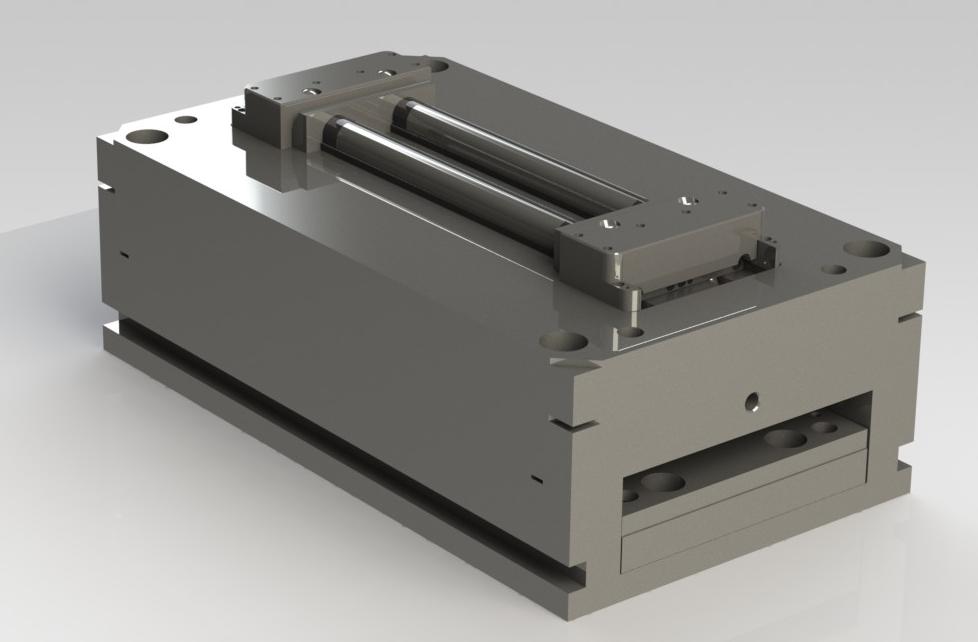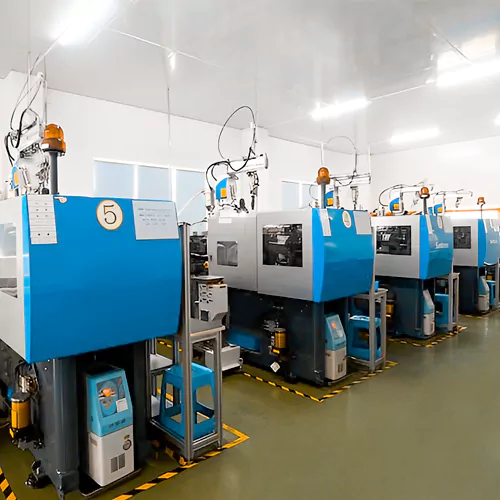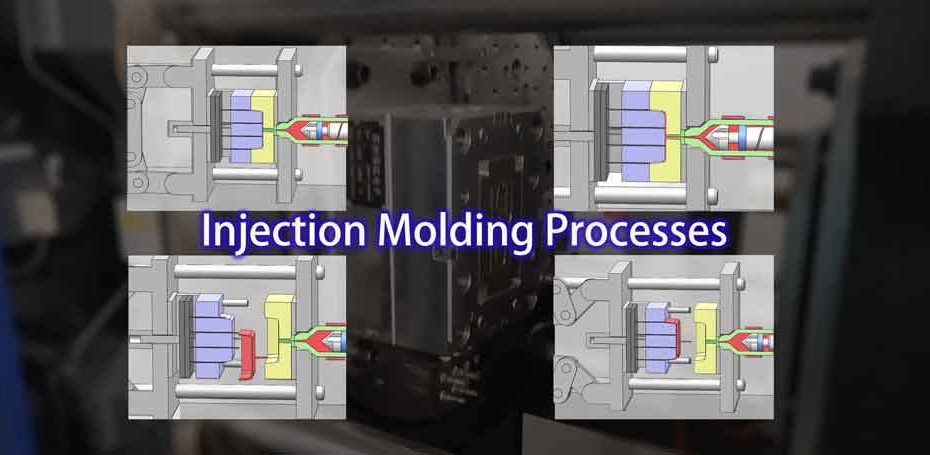Recognizing the Plastic Injection Molding Process for High-Quality Manufacturing
Recognizing the Plastic Injection Molding Process for High-Quality Manufacturing
Blog Article
The Future of Plastic Shot Molding: Trends and Technologies to Enjoy
As the plastic injection molding sector advances, numerous essential patterns are emerging that pledge to reshape its landscape. Automation and smart production strategies are set to improve performance, while the change towards lasting products shows a growing environmental awareness.
Automation and Smart Manufacturing
As the plastic injection molding industry develops, automation and wise manufacturing are taking spotlight, reinventing manufacturing processes - Plastic Injection Molding. The combination of sophisticated modern technologies such as robotics, IoT (Internet of Things), and man-made knowledge is allowing producers to improve efficiency, minimize functional prices, and boost product top quality. Automated systems simplify process, lessening hand-operated treatment and increasing throughput, which is important in meeting the climbing demand for rapid production cycles
Smart manufacturing technologies facilitate real-time tracking and data analysis, enabling companies to maximize maker performance and anticipate maintenance demands. This aggressive method not just lessens downtime but additionally extends the life expectancy of devices. In addition, using collective robots, or cobots, boosts the versatility of production lines, allowing devices and employees to run alongside safely and effectively.
The fostering of automation in plastic injection molding is not merely a pattern yet a tactical necessary for organizations intending to continue to be competitive in an international market. By harnessing these technologies, manufacturers can accomplish higher precision, minimize waste, and adjust quickly to changing consumer needs, placing themselves for lasting development in a significantly automated future.
Sustainable Materials and Practices
The press towards automation and wise production has actually led the method for a better focus on lasting products and methods within the plastic injection molding market. Firms are significantly looking for green options to standard petroleum-based plastics, resulting in the adoption of bio-based and recycled products. These sustainable products not only decrease ecological impact but also straighten with customer demand for greener products.

In addition, cooperation between makers, product distributors, and ecological companies is cultivating innovation in the growth of lasting materials that meet efficiency requirements without compromising high quality. As guidelines around plastic usage become more stringent, the market is poised to adapt by welcoming these sustainable approaches, guaranteeing long-lasting stability and minimizing dependence on non-renewable sources. The assimilation of sustainability right into plastic shot molding is not simply a fad; it is coming to be a necessary element of company obligation and operational quality.
Breakthroughs in 3D Printing
Recent advancements in 3D printing modern technology are dramatically transforming the landscape of plastic injection molding. The integration of additive manufacturing processes permits for the fast prototyping of complicated geometries that were impossible or as soon as challenging to attain with conventional approaches - Plastic Injection Molding. This ability not just speeds up item advancement cycles but likewise reduces product waste, aligning with the growing need for sustainable production practices
Additionally, the emergence of crossbreed production methods, which incorporate 3D printing and injection molding, uses manufacturers the capability to develop intricate styles while keeping the efficiency of automation. This approach allows the manufacturing of tailored parts customized to details consumer requirements without giving up the rate and scalability that injection molding supplies.
Furthermore, improvements in products, such as high-performance polymers and composites especially developed for 3D printing, are enhancing the useful capabilities of printed elements. These materials can endure better stress and exhibit enhanced thermal residential or commercial properties, making them appropriate for even more requiring applications.
As 3D printing proceeds to advance, its integration into plastic injection molding processes promises to improve efficiency, minimize expenses, and foster advancement in item layout, placing suppliers to much better fulfill the obstacles of an open market.
Information Analytics and IoT Assimilation
Information analytics and the assimilation of the Net of Things (IoT) are transforming plastic injection molding by offering producers with unprecedented insights right into their procedures. By leveraging real-time information gathered from interconnected makers and sensors, producers can keep track of performance metrics, identify inadequacies, and maximize manufacturing processes. This data-driven method facilitates anticipating upkeep, minimizing downtime and prolonging equipment life-span.
In addition, IoT combination enables for enhanced top quality control. By continually tracking variables such as temperature, pressure, and cycle times, producers can promptly find variances from established criteria and make modifications in real time. This not just improves item consistency yet likewise reduces waste and scrap prices.
The fusion of information analytics and IoT innovations additionally equips suppliers to embrace even more nimble manufacturing techniques. With accessibility to extensive information analytics, organizations can react to market demands with higher adaptability, changing manufacturing schedules and setups as required. This versatility is crucial in a quickly transforming manufacturing landscape.

Personalization and Style Adaptability
Just how can modification and layout adaptability boost the competition of plastic shot molding? In a significantly varied market, the capacity to use customized options is vital. Modification enables makers to satisfy particular client needs, accommodating unique measurements, forms, and performances that conventional products may not fulfill. This visit adaptability not just promotes client loyalty yet likewise opens avenues for brand-new organization chances across various fields, from auto to consumer items.
Improvements in design modern technologies, such as computer-aided style (CAD) and quick prototyping, additional bolster this pattern. These tools make it possible for designers to develop elaborate patterns and intricate geometries, which can be effortlessly integrated into the manufacturing process. Because of this, producers can react swiftly to altering consumer preferences and market needs.
Furthermore, the execution of modular tooling systems enhances style adaptability, permitting quicker adjustments between different item layouts without comprehensive downtime. This flexibility can lead to minimized preparations and lower production expenses, making firms more competitive and nimble. Eventually, welcoming customization and style versatility in plastic shot molding not just elevates product offerings however additionally reinforces market positioning in an ever-evolving landscape.
Conclusion
The future of plastic injection molding is defined by considerable innovations in automation, lasting practices, and innovative materials. The combination of IoT and information analytics will certainly boost functional performance and anticipating upkeep. Furthermore, the adoption of bio-based and recycled materials, alongside progress in 3D printing, will foster sustainability within the market. Customization through modular tooling and rapid prototyping will certainly make it possible for suppliers to continue to be affordable and receptive to the dynamic demands of the market. her response

The future of plastic injection molding is defined by substantial advancements in automation, sustainable methods, and ingenious products.
Report this page